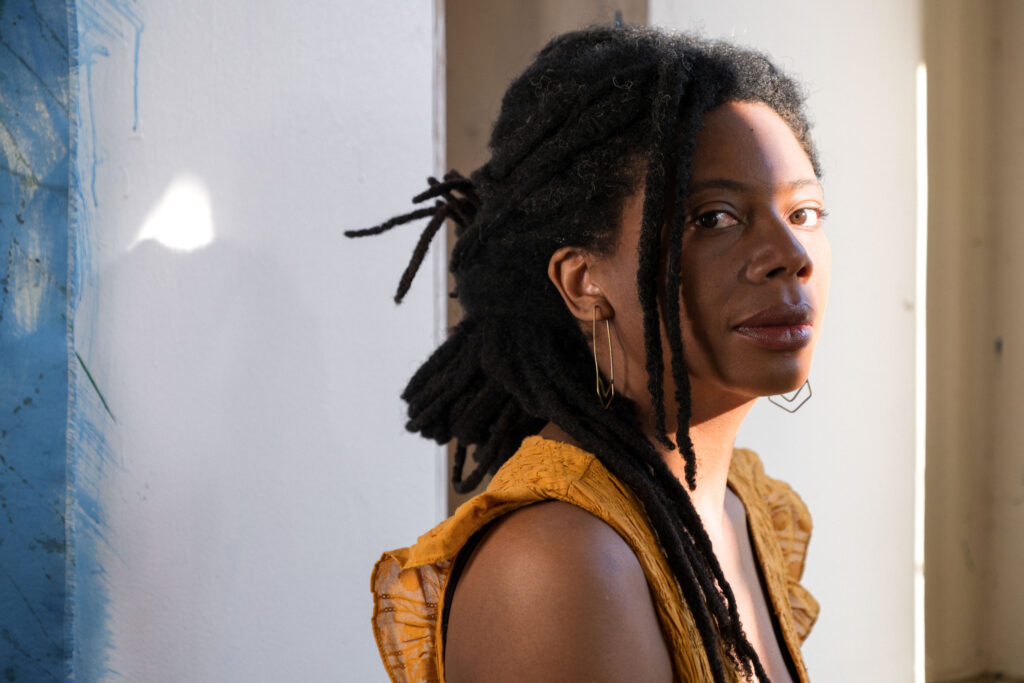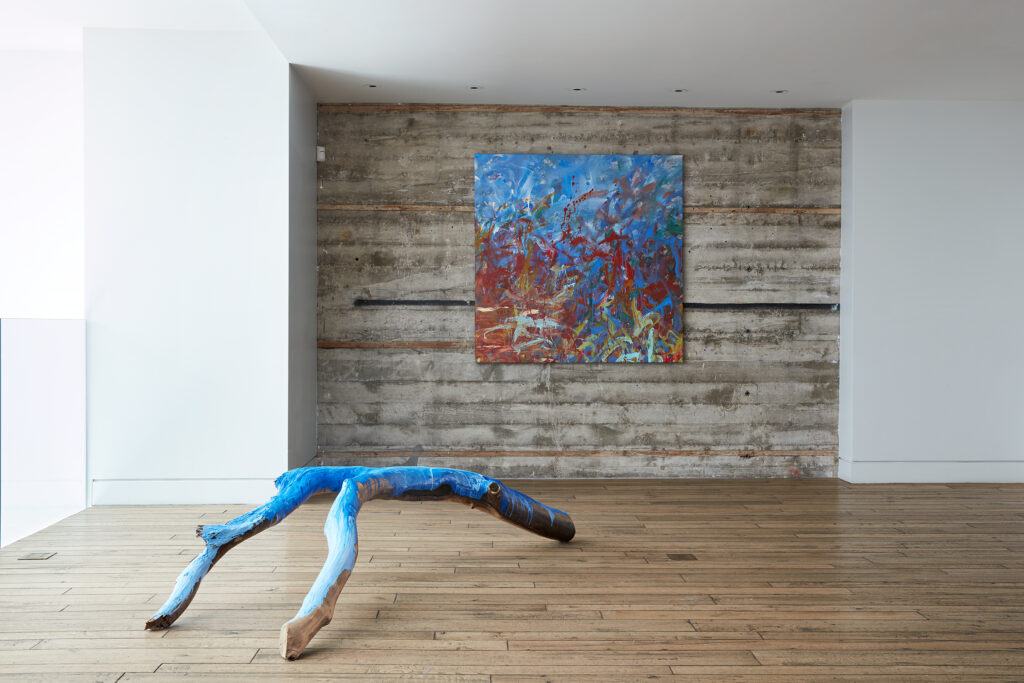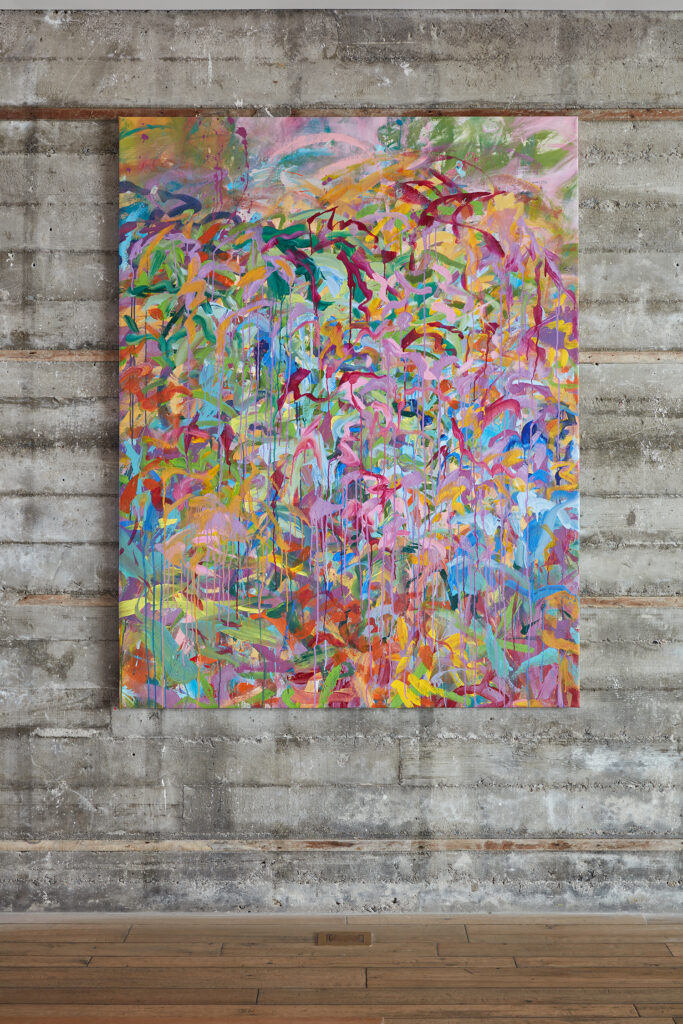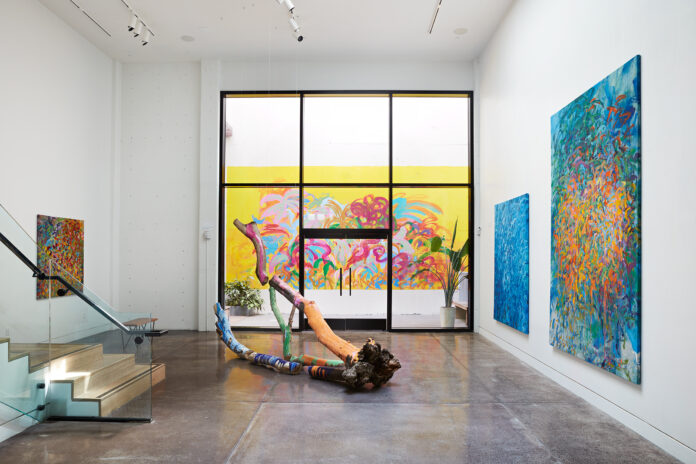Over the course of three years, Shara Mays evolved her artistic practice from a focus on Southern landscapes and family struggles to a chase after freedom and identity. Today, she is searching for ways to depict unknowable emotions and imagery. The act of painting helps in this quest.
For Mays, the studio is a point of departure, where the pursuit of liberty begins.
She is a visual artist, she claims, because she doesn’t know how to do anything else. Also because, at an early age, she realized that she couldn’t exist without art in her life.
Born in Tarboro, North Carolina, Mays moved to Colorado at age 11. She completed her BFA at The Corcoran College of Art at George Washington University and lived in New York for a time. In 2004, after the birth of her first daughter, her family followed friends to the Bay Area, eventually making the Temescal neighborhood of Oakland their home. Mays earned her MFA at San Francisco Art Institute in 2020.

After college, she became a visual designer and art director, working for cosmetic companies and Peet’s Coffee. Reaching a turning point 10 years ago, she slowly started moving away from design and back into creating contemporary art full-time.
“I always felt that I wanted to use my art to answer more philosophical questions about life,” Mays told 48hills. “What is our place here on Earth? How do we relate to those who have come before us? How can we exist in this world in a productive way? How can we overcome adversity?”
Mays is resolute, evolving, and colorful in her pursuits. A new studio in Balboa Park provides a roomy, light-filled space that allows her to leave messes, sketches, and works-in-progress all over the place. Prior to that, she worked as an affiliate artist at Headlands Center for the Arts in Sausalito for nine months. She’s also worked from a backyard studio space, though she prefers having a studio that is not close to home.
At a certain point in her career, she began shifting from literal to internal landscapes. The first paintings in this latter vein were inspired by a family photo from the 1950s of her dad as a toddler. In the photo, he is being held by an older cousin while two other relatives stand alongside them, surrounded by a thicket of lush bushes in her aunt’s front yard.
“Their neighborhood, an all-Black community on the east side of town, feels safe in the photo, even though I know the world surrounding them in the South was not safe for Black children, especially Black boys,” Mays said.

She became interested in conjuring up, on canvas, a safe Eden for ancestors like her father who are no longer alive, and who deserved transcendence from the limitations of racism.
On her studio wall are printouts of vintage imagery of Black Americans interacting in some way with the land. She sources them from the public domain online archives of the Schomburg Center for Research in Black Culture.
Mays’ great-grandfather was a sharecropper, and his descendent is interested in the Black American journey from slavery to farming to widespread removal from any connection to the land. She’s curious about how the modern lived experience is synonymous with the urban landscape.
Her paintings translate this history through bold and expressive means.
“I really believe that my paintings are helping me to learn about things in this world that are indescribable, unknowable—even emotions I have no way to define, or memories I no longer have access to,” Mays said.
The artist feels guided by her intensity and determination to have those experiences made tangible, while letting the innate qualities of paint primarily dominate the work.
“I really embrace drips and splashes and the way paint dries on the canvas,” she said. “Color, color, and more color—I can’t get enough of it. I am obsessed with vibrancy.”

Freedom as the main ingredient is both subject and motivation, as Mays aims to get into “the zone” by also letting go of what she’s learned over the years.
“I try to do whatever the hell I want to with each canvas,” she said. “I’m looking for immediacy, for accepting mistakes, for overcoming the challenges of each composition. I’m relying on my instincts, on muscle memory, so that compositions emerge on the surface that wouldn’t otherwise.”
Though hers is a methodical process, it is also minimal. Starting with her paintings on the floor, Mays applies gesso and high fluid acrylic paint for their first layer, which is all about physical interaction with the canvas. From there, she takes her work to the wall, and begins a more concerted effort to address a narrative, however loosely.
“In every piece, there’s a moment where I struggle,” she said. “I feel like I’ve messed up even. But I keep going because that’s part of the work. I want that struggle embedded into the canvas. I work through the struggle. It’s a lot like life.”
After recent exhibitions at Jenkins Johnson and Chandran galleries, Mays is back in her studio doing drawings and research for a new body of work. Her work is included in “Terra Firma,” through March 19 at New Museum Los Gatos (NUMU.) Mays will have a solo exhibition at Fourth Wall Gallery in Oakland in the spring.
Every piece of Mays’ work is open for interpretation. To her, art is made by the artist but consumed by the viewer. Her sizable canvases, some as large as 84 by 72 inches, allow viewers a kind of full-body immersion, a chance to enter and explore her magical lands.
For more information, visit her website at sharamays.com and on Instagram.






